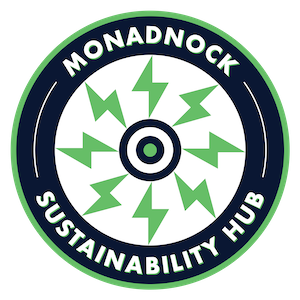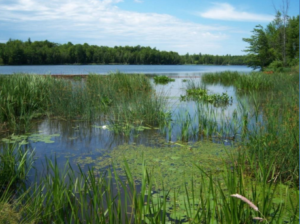By Catherine Owen Koning, Professor of Environmental Science at Franklin Pierce University
Originally Published in The Monadnock Shopper News, Green Monadnock column, June, 2023
We all know that change is unavoidable – add climate change to the list of inevitabilities! Climate has always changed throughout earth’s history, but in the distant past, changes happened very slowly and were caused by external forces like meteors, or internal geologic processes, such as the movement of continents and the rise of mountains. The changes we are seeing today are happening very fast, and are caused by us! Although we can still avoid the worst impacts of climate change by reducing production of heat-trapping carbon pollution, a major amount of climate change is already “baked in” to earth’s dynamics – it is happening now, with more to come.
In May, I spent a week on Cape Cod, where you can see sea level overtopping dunes and moving inward. Dozens of diamondback terrapins, beautiful saltmarsh turtles, died from cold exposure this year after coming up during the January warm spell. Closer to home, scientists predict more frequent droughts and severe hot spells, punctuated by large precipitation events – huge rainstorms, or snowstorms turning to ice, creating power outages like we saw this last winter, as well as floods and other problems. And unpredictable freeze-thaw events, like the one we saw just last month, threaten our food supply, our economy, and the ability of natural areas to support wildlife. Wildfires, even distant ones, impact our own air quality and health. These problems often have worse effects on lower-income people than on others.
So, change is happening, what can we do to prepare for the impacts right here at home?
Efforts are underway all over the world to improve the resilience of our natural and human-created environments. The phrases “climate resilience” and “climate adaptation” are being used somewhat interchangeably, but both describe actions we can take ahead of time to protect our homes, businesses, and natural resources from the punishing effects of climate change.
Nature-based solutions include installation of flood-storage areas planted with native vegetation and restoring wetlands to absorb sudden downpours. Planting trees in strategic locations helps shade buildings on hot days; both actions have the added benefit of also absorbing the carbon pollution that causes climate change in the first place! To ensure that our wild animal friends can withstand the extremes of heat and cold, groups are protecting large, connected blocks of natural areas, especially those that have micro-habitats with cooler and warmer spots.
Identifying vulnerable areas is important for climate resilience. Which roads are likely to flood, which homes are in low-lying areas? Adding flood storage, installing larger culverts under roads, re-directing flood water and planting to prevent erosion and washouts can prevent problems. The City of Keene has reduced new construction in the most flood-prone areas and has created areas for snow piling during extreme snowfall events. Keene has also realized that the City water supply is vulnerable to drought, as well as pollution during large downpours, and working to address these problems.
Some cities have established “resilience hubs”, which provide cooling or heating, and have generators to weather a storm. Communication systems, set up in advance of climate emergencies, help residents know where to go to escape floods, heat, cold or lack of power.
Businesses also have to prepare for climate extremes; preparations include installing solar systems with battery backups, switching over to electric heating and cooling systems, and elevating their electrical systems, chemical supplies or other vulnerable structures so they will not be damaged by flooding.
What about our farmers? Extended droughts followed by sudden downpours, and hard frosts in late spring does not make for easy growing! The Cheshire County Conservation District provides grants for farms to become more climate resilient by installing automatic livestock watering and drip irrigation systems to conserve water, updating drainage systems and other important steps to reduce the impacts of climate change.
Finally, probably the most critical piece of climate resilience is empowering citizens with real-time weather data and very fine-scale predictions of impacts, so people know what to expect, when and where, and can prepare accordingly. Consider battery backup, air filters, cooling centers, think about your vulnerable neighbors who may need help. All of us need to be ready for the changes that are already happening, and more to come.
Catherine Owen Koning is a Professor of Environmental Science at Franklin Pierce University, where she is part of the Institute for Climate Action. She is also a member of the Monadnock Sustainability Hub’s Board of Directors.

